 |
|
|
||||
| Coastal and Marine Geology Program |
VIDEO DEMONSTRATION |
|||||||||||||||||||||||||
|
|
|||||||||||||||||||||||||
Wet Sieve MethodVideo Length: 2 minutes, 43 seconds
|
|||||||||||||||||||||||||
|
VIDEO FRAME
|
NARRATIVE
|
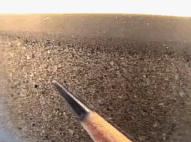 |
Wet sieving is used to separate the coarse fraction of a sample, which is composed of gravel and sand, from the fine fraction, composed of silt and clay. |
 |
A typical assembly for wet sieving requires:
|
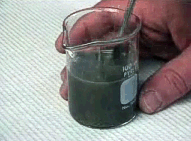 |
Although unconsolidated, sediment samples are first pre-soaked for 1 to 2 hours to aide disaggregation. |
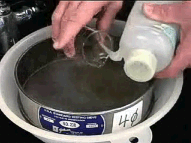 |
The sample is washed into the sieve with a squeeze bottle. If the fine fraction is to be analyzed by Coulter Counter, distilled water is used during wet sieving. However, if the fine fraction is very small, but still to be analyzed by Coulter Counter, a 4% electrolyte solution may be used. If the fine fraction is to be analyzed by pipette, a 0.5% sodium hexametaphosphate solution is used. |
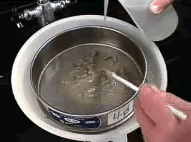 |
Once on the sieve, the sample is gently agitated with a rubber policeman or the analyst’s fingers while liquid is gradually added. Enough liquid must be present to wash the fine fraction through the sieve, but the total volume of liquid used during this part of the analysis must not exceed that of the Mason jar, or about 800 ml. |
 |
When the separation is complete, the fine fraction is sealed in a labeled Mason jar and reserved for analysis by Coulter Counter or pipette. |
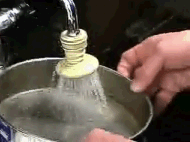 |
The coarse fraction is rinsed with tap water to remove any electrolyte or remaining fines, and washed into a pre-weighed beaker. A small cropped funnel and crystallizing dish help transfer the washed coarse fraction from the sieve without any loss of sediment. |
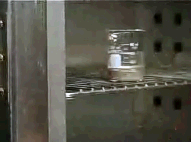 |
This fraction is then oven dried and reserved for analysis by dry sieving or rapid sediment analyzer. |
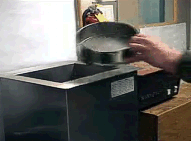 |
The sieve should be cleaned by emersion in a sonic bath after about every fourth sample, to remove any particles lodged in the screen mesh. |